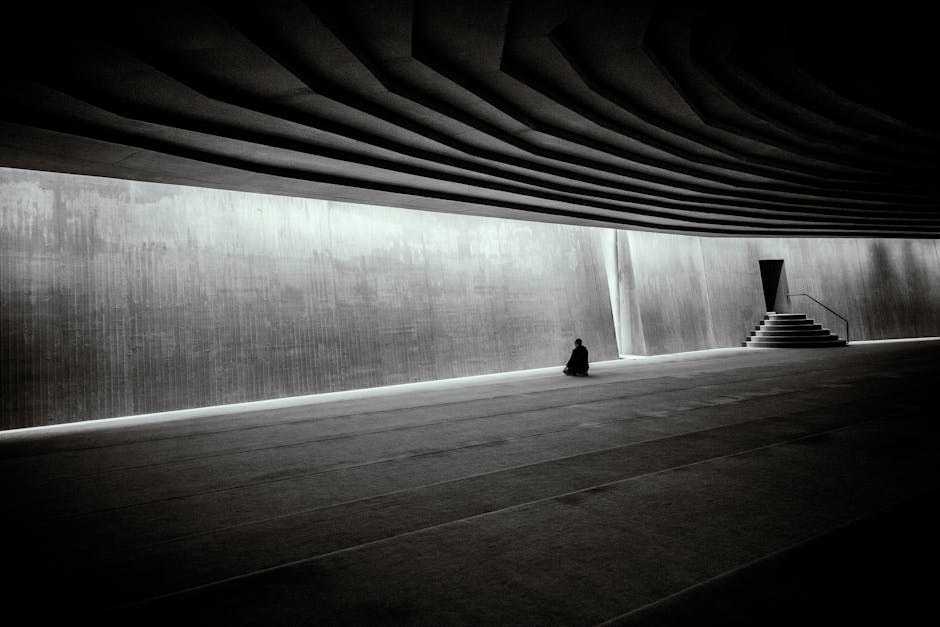There is a quiet spark that happens when two people meet each other’s eyes – the sort of charged stillness that says more than any opening line. Used with care, prolonged eye contact can turn a passing glance into mutual curiosity, and curiosity into chemistry. This guide reimagines familiar advice with practical steps, examples, and nuance so you can understand what prolonged eye contact communicates, when it signals attraction, and how to wield it gracefully without drifting into awkward territory.
Why sustained looking feels so powerful
We are wired to scan faces and follow gaze. A calm, steady look signals attention, interest, and confidence, while a scattered gaze hints at distraction. In flirting, prolonged eye contact leverages that instinct, concentrating your attention on one person and inviting them to notice you back. Because eyes reveal emotion – surprise, amusement, shyness – a held gaze acts like a spotlight on those feelings, intensifying the moment without a single word.
When someone holds your gaze, you immediately evaluate context. Is there a faint smile? Do they angle their body toward you? Are their brows soft rather than stern? The meaning of prolonged eye contact depends on these small cues. Without them, a look can feel neutral, even absent-minded. With them, the same duration becomes a warm invitation.

What prolonged eye contact can mean in real life
Silent messaging. A person may be trying to communicate without interrupting. Think of a raised brow, a quick look toward an empty seat, or a playful expression. Here, prolonged eye contact functions like a whisper – a brief private channel that says, “Notice this,” or “Your turn.”
Attraction that’s a bit shy. Many people mix a steady gaze with small signs of nervousness – a quick swallow, a half-hidden smile, a slight blush. The combination suggests interest, even if words lag behind. If you suspect interest, offer an easy, friendly smile; if they brighten or smile back, you’ve likely read the moment correctly.
Bidding for attention. Sometimes someone simply wants you to look their way. Maybe they hope to start a conversation; maybe they just enjoy the spark of being noticed. Prolonged eye contact makes that bid unmistakable because humans instinctively respond to being looked at.

Mind wandering. People zone out and stare through others. The tell is a faraway expression with little emotional change. If you catch this, don’t over-interpret – prolonged eye contact without engagement can be accidental background focus.
Playful flirtation. When combined with relaxed posture, an amused expression, and subtle mirroring, prolonged eye contact reads as flirtatious. This is the moment to reciprocate – or to gently look away if you prefer not to encourage it.
The etiquette of attraction – reading the room
Flirting thrives on mutuality. If your look is returned and warmed by a smile, proceed. If the other person stiffens, looks down quickly, or angles away, that is useful information too. Prolonged eye contact should feel reciprocal; it’s more duet than solo. Treat every reaction as feedback – adjust, soften, or step back as needed.

Consider context. In a lively bar, a playful stare across the room is expected. In a quiet elevator or a work meeting, the same intensity can feel intrusive. Setting matters because it shapes how prolonged eye contact will be interpreted – flirtation in one scene, pressure in another.
How to make a held gaze feel inviting, not intense
The aim is to suggest interest while preserving comfort. These steps build from subtle to bold, letting the moment unfold naturally.
Begin with glances. Start light – let your eyes find the person and linger a heartbeat longer than casual. Then look away. These small previews prepare the ground for prolonged eye contact by introducing your presence without overwhelming it.
Let yourself admire, then reset. After a few glances, allow your gaze to take them in – face, posture, outfit – and then reset to neutral. You are conveying appreciation without demanding a response. If they notice, all the better; appreciation framed by good manners is disarming.
Add a teasing cue. A delicate lip bite, a soft grin, or an amused head tilt can shift the tone from neutral to suggestive. Use sparingly. Paired with prolonged eye contact, these cues make your interest legible while keeping the mood light.
Lock eyes, then breathe. When you finally meet eyes, hold for a comfortable span and keep your breathing steady. Prolonged eye contact lands best when your body language remains relaxed – shoulders easy, chin level, weight grounded. You are signaling poise rather than challenge.
Smile with restraint. A gentle smile softens intensity. Think of the hint of a smile that blooms because of this person, not a broad grin meant for a photo. That subtlety tells a more personal story.
Conversation timing that keeps the spark alive
Once a chat begins, the balance changes. You no longer rely on distance; you’re trading words and micro-expressions in real time. Prolonged eye contact during conversation works best when you alternate: more contact while listening, a bit less while speaking. It shows you’re engaged, and it helps the other person feel seen. If you notice them looking away to think, give them that space – then meet their eyes again as they return to you.
You can also shift focus strategically. Rather than staring directly into the pupils nonstop, let your gaze drift between one eye, the other, and the lips. This creates a soft triangle that feels intimate while remaining natural. The triangle keeps prolonged eye contact from becoming rigid – it’s movement within connection.
Using small techniques with big impact
The triangle technique. Move your gaze from one eye to the other, then to the mouth, and repeat. This rhythmic pattern hints at attraction without a word. Because it’s subtle, it sustains prolonged eye contact without the awkwardness of a fixed stare.
Near-eye focus. Looking at the bridge of the nose or the area just beneath the eyes reads like direct gaze to the other person. If direct pupils make you self-conscious, this trick helps you hold prolonged eye contact while staying comfortable.
Nod and echo. Show you’re tracking their thoughts with small nods or brief verbal echoes. These gestures make prolonged eye contact feel collaborative rather than intense – as if you’re building the moment together.
Mirror lightly. If they lean in, you lean in a touch; if they smile, mirror a softer version. Mirroring during prolonged eye contact reinforces the sense of rapport, but keep it gentle so it remains natural.
Common missteps – and how to avoid them
Overholding the stare. If you never look away, the moment can feel like a standoff. Release the gaze now and then – scan the room, sip your drink, or glance at their hands as they speak – then return. Prolonged eye contact should breathe.
Forgetting the smile. A neutral face under bright lights can read as stern. A light smile is the difference between charm and scrutiny, especially when prolonged eye contact stretches longer than usual.
Ignoring their signals. If they seem uneasy – tight shoulders, forced laughter, short responses – reduce intensity. Prolonged eye contact is not a test of will; it’s a shared moment. Respect creates attraction.
Using it everywhere. Context shapes interpretation. In professional or confined settings, keep it friendly and brief. Save flirtatious prolonged eye contact for spaces where play is welcome.
From across the room to side-by-side
Picture two scenarios. Across a room, you catch someone’s eye, smile, and hold – they mirror you. That’s your green light to approach. Start with something simple and situational, not a grand declaration. Prolonged eye contact has already done the heavy lifting by establishing interest.
Now imagine you’re already beside each other – at a counter, in a queue, on adjacent barstools. Here, prolonged eye contact is best in short, meaningful bursts tied to the conversation. Ask or answer, then meet their eyes. Let silence do a little work. The alternation between words and looks creates an intimate rhythm.
Confidence without bravado
Real confidence is unhurried. You don’t need to stare to prove it. Stand with balanced posture, let your shoulders relax, and keep your gestures economical. Prolonged eye contact paired with ease communicates more than any scripted line – it tells the other person you’re present, curious, and comfortable in your own skin.
If nerves creep in, slow down. Take a steady breath, notice your feet on the ground, and soften your eyes. The point of prolonged eye contact is connection, not performance.
Decoding mixed signals
Sometimes you’ll get a mixture: a long gaze but closed body language; a quick look-away followed by another immediate glance; a friendly smile that never quite reaches the eyes. Treat these as invitations to proceed thoughtfully. Ask a light question. See whether they lean in or keep distance. Prolonged eye contact opens the door, but the conversation that follows tells you whether to step through.
Also remember that personalities vary. An extrovert may hold a look with ease; a shy person might check in with fleeting glances. Both can be flirting. Prolonged eye contact is a signal, not a contract – it starts a conversation about interest that both of you keep shaping moment by moment.
Turning the moment into words
Once you’ve traded a few warm looks, words come more easily. Comment on the setting, share a quick observation, or ask a small open question. Let your tone match your gaze – friendly, light, a touch playful. Prolonged eye contact has already set the stage; your voice simply steps into the lighting.
As the chat builds, continue to use prolonged eye contact to underline meaning. When you say something sincere, meet their eyes. When they speak about themselves, look at them with curiosity. This dance of attention is what makes flirting feel alive.
Putting it all together – a simple flow
Notice and preview. Offer a few soft glances. If you receive one back, let the next glance last longer. Prolonged eye contact works best when it grows organically from smaller moments.
Signal with warmth. Add a subtle cue – a small grin, a tilt of the head – to shift into flirtation. Keep the rest of your body language open and relaxed.
Hold, then release. Meet eyes and hold, then break with purpose: a sip, a look at the menu, a return to friends. This ebb and flow keeps prolonged eye contact feeling intriguing rather than heavy.
Approach or invite. If the energy remains mutual, close the distance or create an opening for them to do so. A simple “Hi – I’ve been meaning to say hello” pairs nicely with everything your eyes have already said.
Maintain during conversation. While chatting, look more when listening and a little less while speaking. It emphasizes care and keeps prolonged eye contact aligned with genuine attention.
Respect, comfort, and the art of stopping
Good flirting is ethical flirting. If the other person looks away and doesn’t re-engage, let it end there. If they brighten when you meet eyes, keep going. Prolonged eye contact should feel like an offer, not a demand – an open door that’s easy to walk through and just as easy to leave.
This mindset makes you more attractive. It shows self-possession and kindness, and it allows prolonged eye contact to remain what it should be: a pleasant, electric moment between two people who are equally curious about what happens next.
A final word on practice
You don’t need a dramatic scene to practice. Try with friends during casual conversation – hold their eyes a touch longer when they make a point, then glance away and return. Notice how it changes the feeling of the talk. As you get comfortable, transferring that calm to a flirtatious setting becomes natural. Because at its heart, prolonged eye contact is simply focused attention delivered with warmth, and warmth is always welcome.
Quick reference – do’s and don’ts
Do start with light glances that build into prolonged eye contact, especially when you sense mutual interest.
Do pair your gaze with soft body language, a hint of a smile, and relaxed posture.
Do use the triangle technique to keep prolonged eye contact fluid rather than fixed.
Don’t overuse it in settings where intense attention could feel uncomfortable or out of place.
Don’t ignore discomfort – yours or theirs. Ease and respect are the frame that makes prolonged eye contact charming.
When the moment is mutual
When everything aligns – a comfortable setting, a receptive partner, shared smiles – prolonged eye contact becomes a quiet accelerant. It is simple, human, and timeless. Use it to say, without rushing, “I see you.” If they answer with the same steady warmth, you already have the beginning of a story.